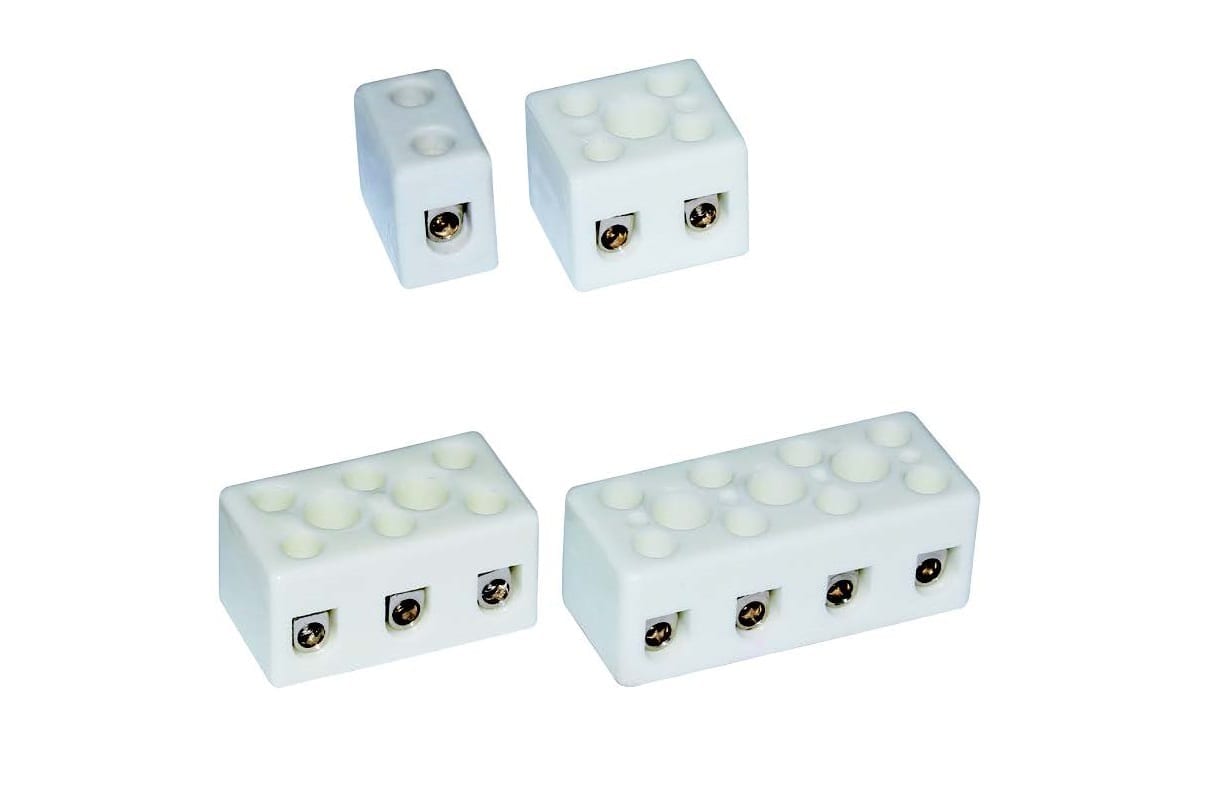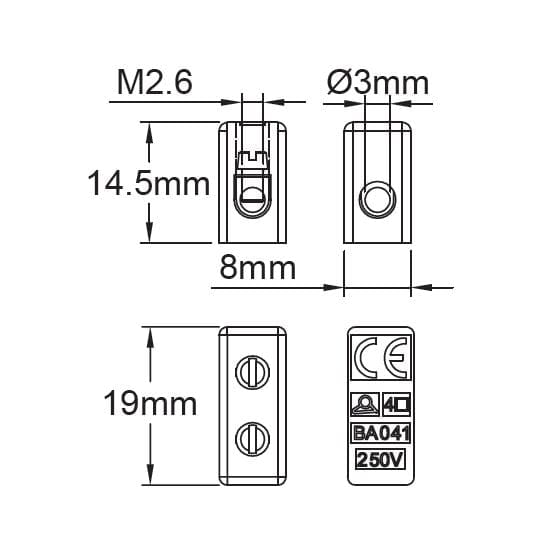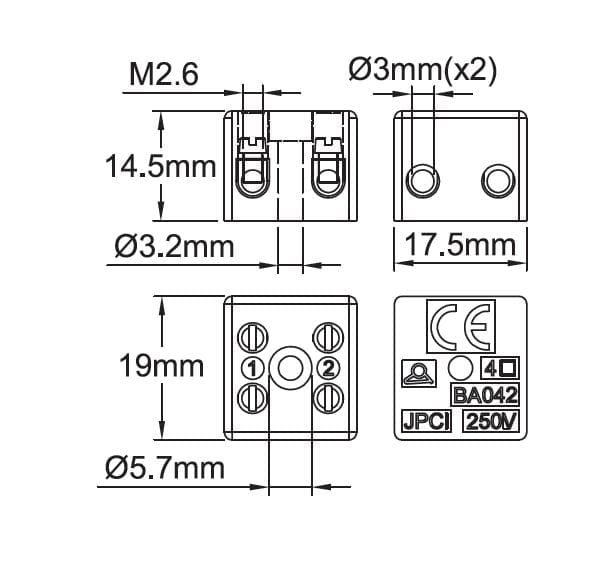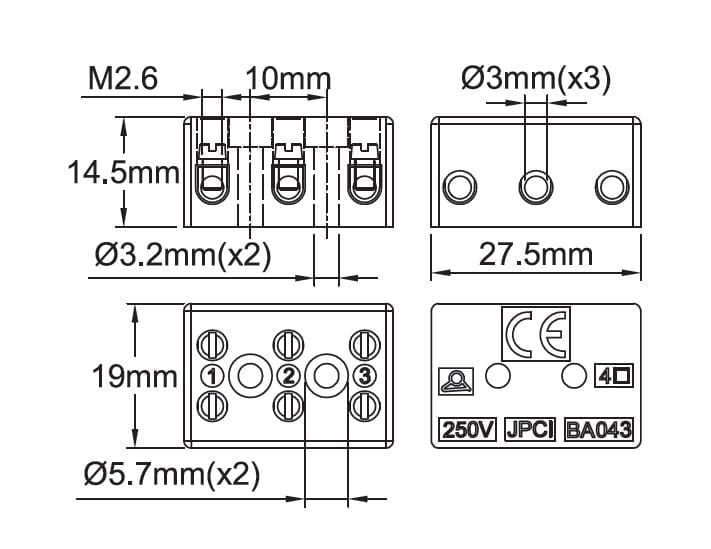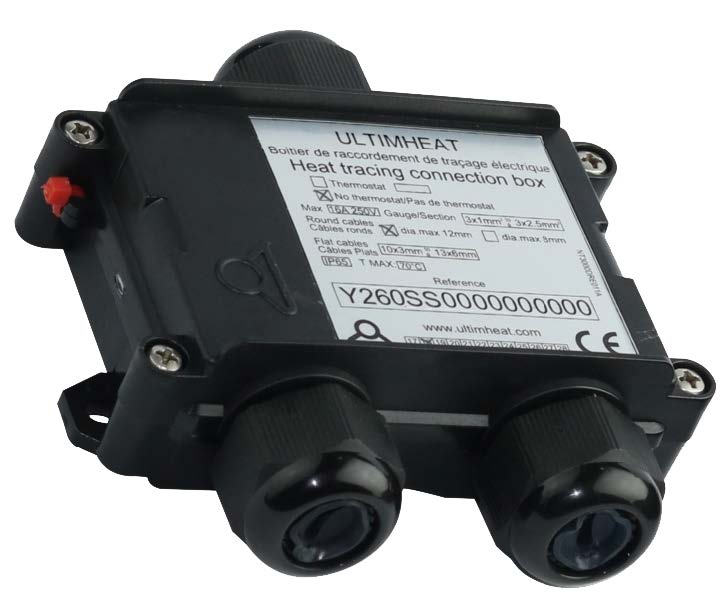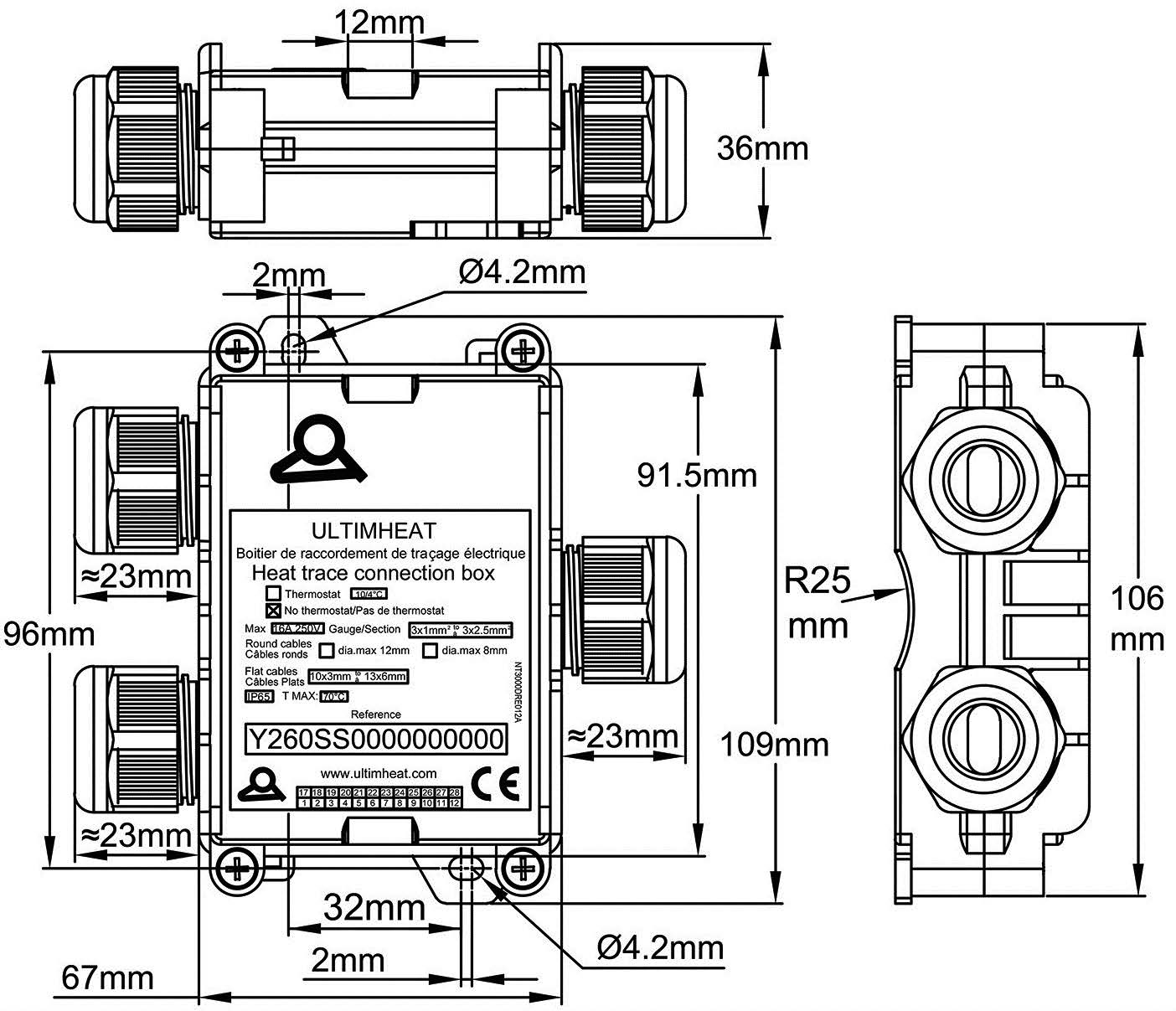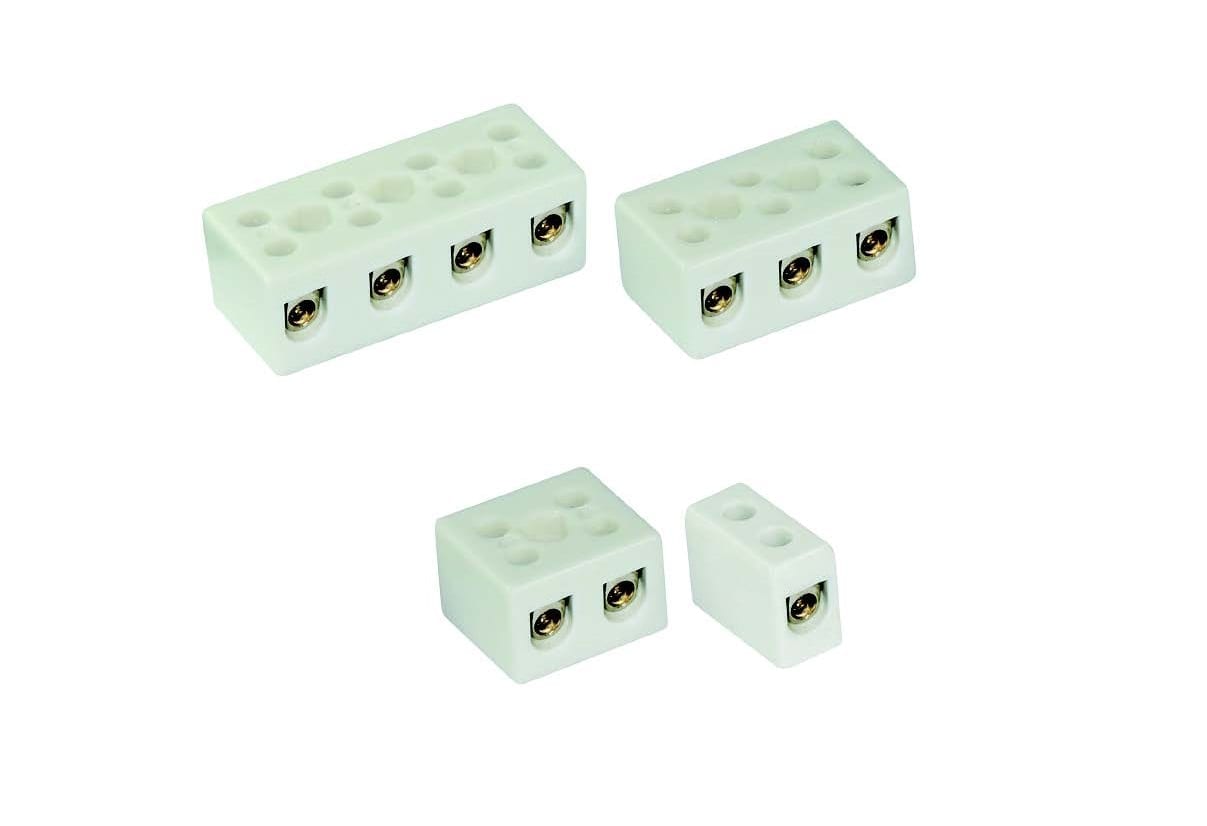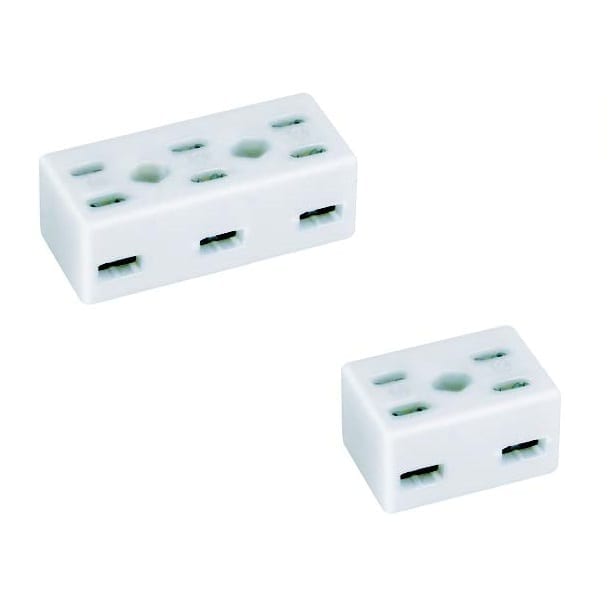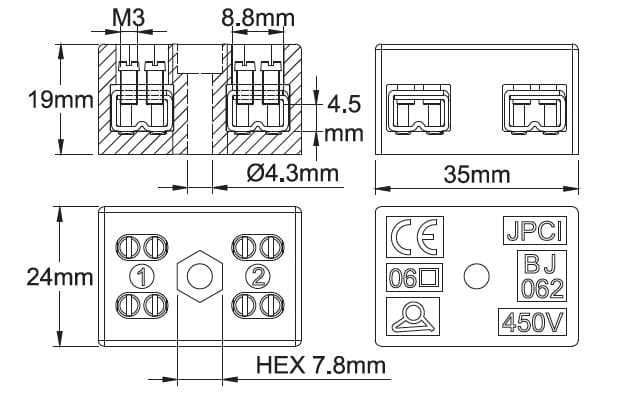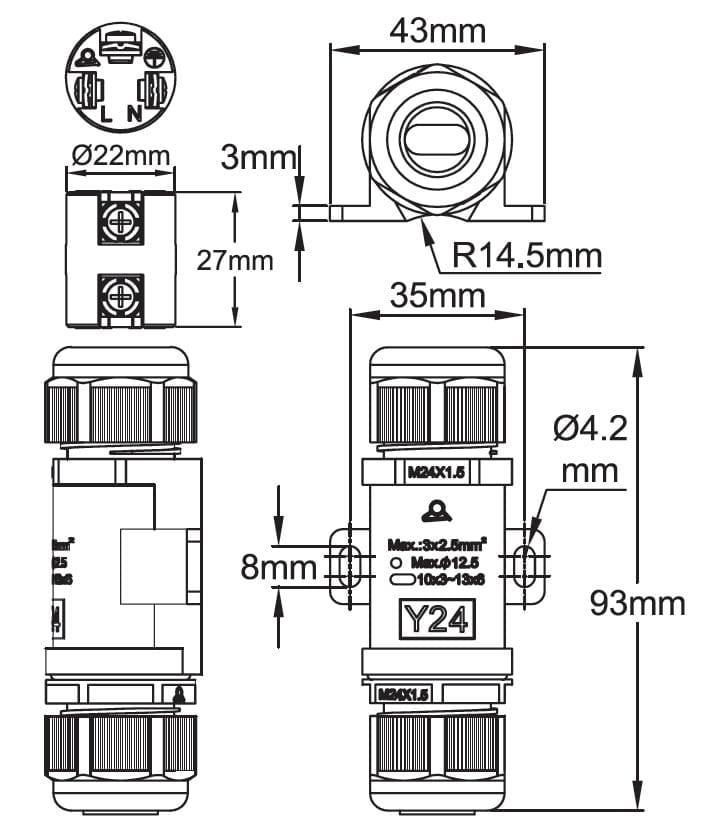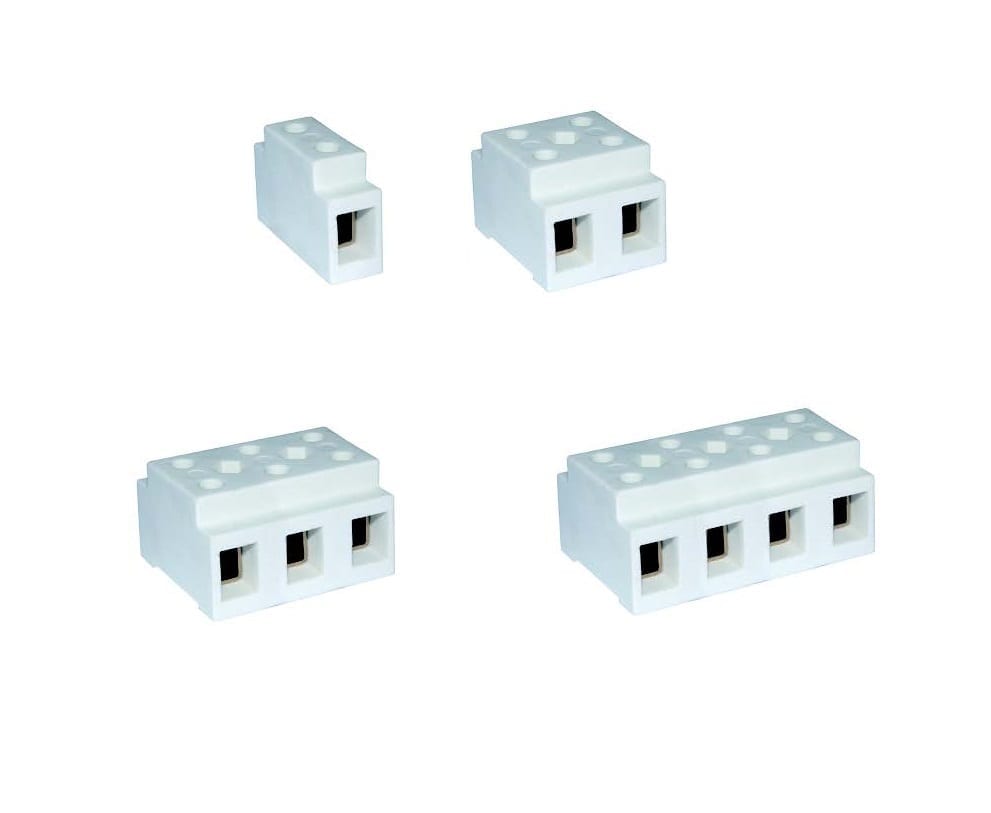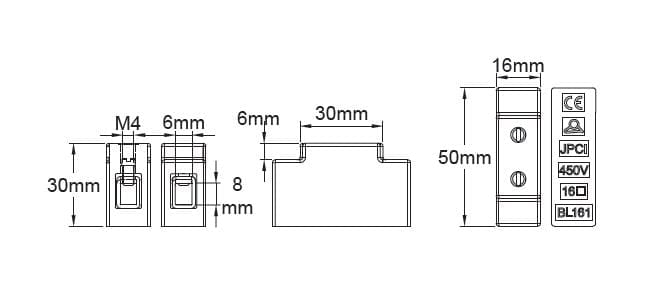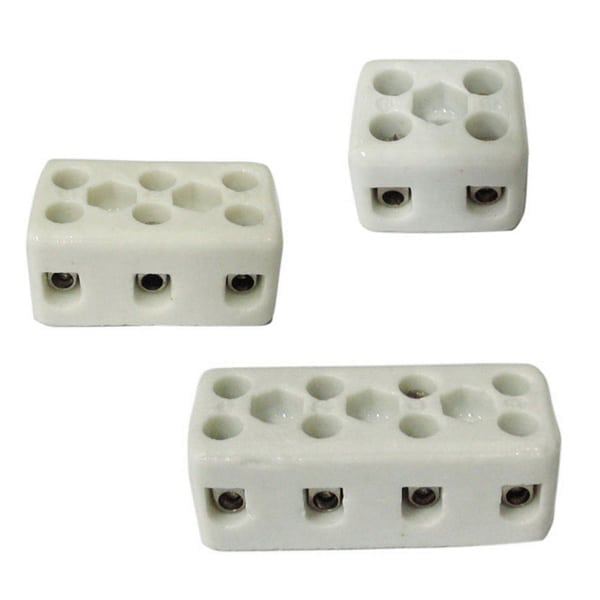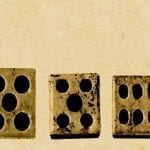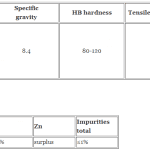Steatite connection blocks, 250V range With pressure screws, protected against electric shock
These high-quality and small foot-print terminal blocks allow efficient and easy wiring of halogen lamps, heating elements, infrared heaters and quartz tube heaters. Because of their construction, they are non-flammable and resistant to temperature and humidity without losing their electrical and insulating characteristics.
| Raw material | |
|---|---|
| Voltage | |
| Ways | |
| Conductor cross-sections (mm²) | |
| Max operating temperature (°C) | |
| Max peak temperature (°C) |
Applications: These high-quality and small foot-print terminal blocks allow efficient and easy wiring of halogen lamps, heating elements, infrared heaters and quartz tube heaters. Because of their construction, they are non-flammable and resistant to temperature and humidity without losing their electrical and insulating characteristics.
They are built according to the specifications of IEC 60998-1 and IEC 60998-2, for a maximum voltage of 250V.
Ceramic: Steatite type C221, unglazed, slightly creamy color.
Typical insulation between two terminals (500V measuring voltage):
- at 20°C (70°F): 300 MΩ
- at 100°C (212°F): 150 MΩ
- at 200°C (390°F): 110 MΩ
- at 300°C (570°F): 90 MΩ
- at 400°C (750°F): 60 MΩ
The insulation values with respect to the earth are approximately 2 times greater. The EN 60998 standard imposes an insulation resistance greater than 5 MΩ. Their insulating characteristics are therefore about 10 to 12 times higher, including at 400°C (750°F).
Dielectric strength: higher than 3000V. Minimum distance through ceramic insulation between 2 terminals: 1.2mm.
Screw: Galvanized steel 4.8, reduced diameter slotted cylindrical head, according to DIN 920
Terminals: CuZn40Pb2 brass, high mechanical strength. Models with nickel plated brass terminals are available on request (MOQ apply)
Maximum operating voltage: 250V, in pollution class 3. (Pollution class 3 defines micro-environmental conditions causing conductive pollution or non-conductive pollution that may become conductive if condensation can occur).
Clearances and creepage distances: ≥ 3mm between mounting face and terminals, between terminals, and between two connection blocks mounted side by side.
Live parts: Protected against accidental electrical contact (Standard Finger Type A according to IEC 61032).
Mounting: With the exception of the single-wire terminals, the terminal blocks have one or two holes for installing them with a screw on a wall or a board. A hexagonal recess makes it possible to place a round-headed or hexagonal-headed screw, or a nut. This allows mounting with clamping by the front or the back.
Maximum ambient temperature:
- Permanent: 230°C / 450°F
- Peak (duration <90 minutes): 450°C / 840°F
The temperature resistance values of the brass connectors were validated by pull tests of the wires according to EN 60998, carried out after 48H at 230°C (450°F) or 90 minutes at 450°C (840°F).
Applicable standards: (IEC) EN 60998-1; (IEC) EN 60998-2-1
Attention: Special care must be taken to avoid reducing the insulation and safety distances from electric shock during installation: avoid the use of inappropriate mounting screws, respect wire stripping lengths and insert wires inside the terminal until the insulation comes into contact with the brass.
Acceptable conductor cross section:
| 4 mm² (BA041, BA042, BA043, BA044) | |
| Solid conductor | 4mm²/2.5mm²/1.5mm²/AWG12/AWG14/AWG16 |
| Stranded conductor | 4mm²/2.5mm²/1.5mm²/AWG12/AWG14/AWG16 |
| Screw thread | M2.6 |
| Tightening torque | 0.4 N.m |
Downloads
Datasheets
Drawings
Related products
Connection blocks
Connection blocks
Room and antifreeze temperature control boxes
T connection box for heat tracing cables with antifreeze thermostat
Connection blocks
Technical informations associated to this product
-
Historical introduction of ceramics used in connection blocks
Hard Porcelain, originated from China, whose manufacturing process has been closely guarded for centuries, owes its characteristics of whiteness, fineness, resistance to temperature, and hardness to the use of two particular minerals, kaolin, ("Gao Ling Tu 高 岭 土 " in Chinese, which can be translated as "Clay of Gao Ling City", located north-east of Jingdezhen in Jiang Xi Province), and "Pu Tong Ci 普 通 瓷 " (translation: common ceramic). -
Technical introduction of connection blocks made in ceramic and polyamide
Ceramic was the first insulating material used in the electrical connection terminals. Mechanically resistant, exceptionally fire resistant, excellent electrical insulator, it had all the qualifications. Produced from locally available raw materials, ceramic and porcelain glazed electro-technical parts were essential in the beginnings of electricity until the appearance of Bakelite in the 1930s, then of engineered thermoplastics to 1960. -
Main properties of brass
According to the Directive 2011/65/ dated June 8, 2011 (Rohs), copper alloys are allowed to have a maximum of 4% by weight of lead as an alloying element. (Provisions of Article 4 and paragraph 1 of Annex II, limit value set by 6c of Annex III) -
Main properties of usual stainless steels
According to the Directive 2011/65/ dated June 8, 2011 (Rohs), stainless steel alloys are allowed to have a maximum of 0.1% by weight of lead, lead, mercury, hexavalent chromium, PBB (Polybrominated biphenyls), PBDE (Polybrominated Diphenyl Ethers) and 0.01% of Cadmium in weight.

